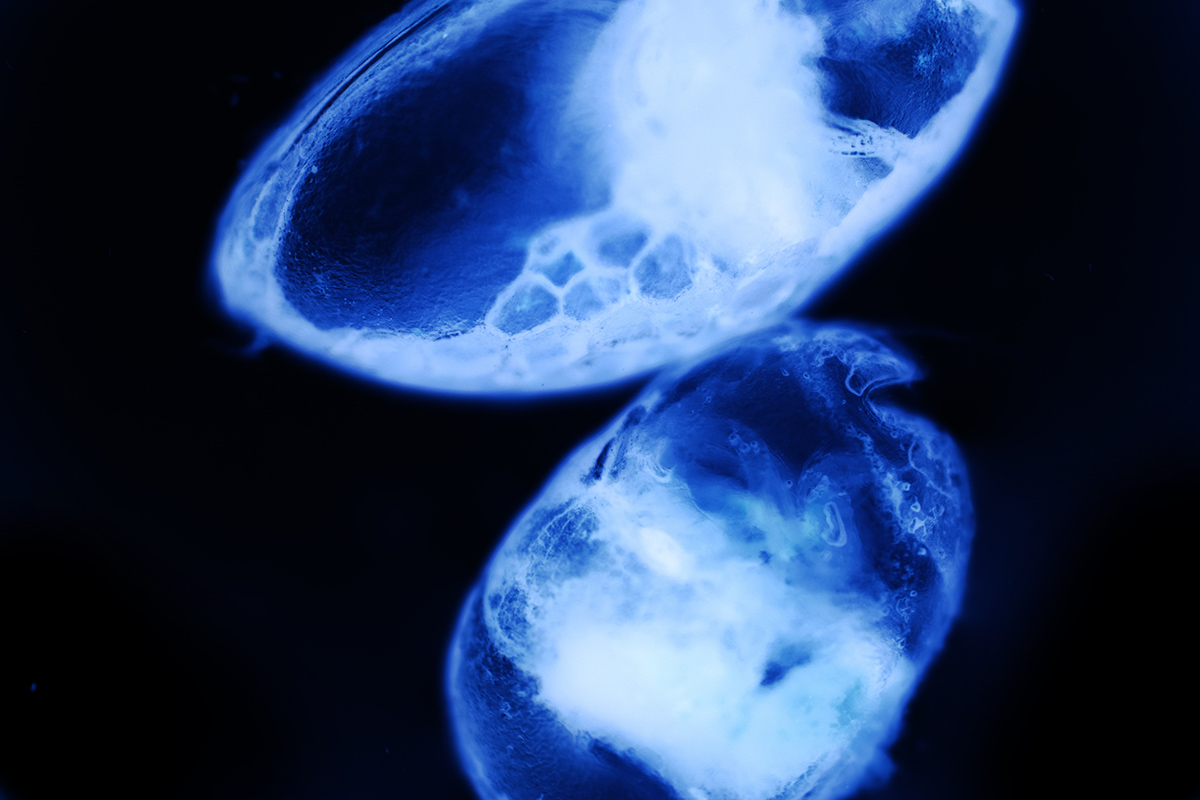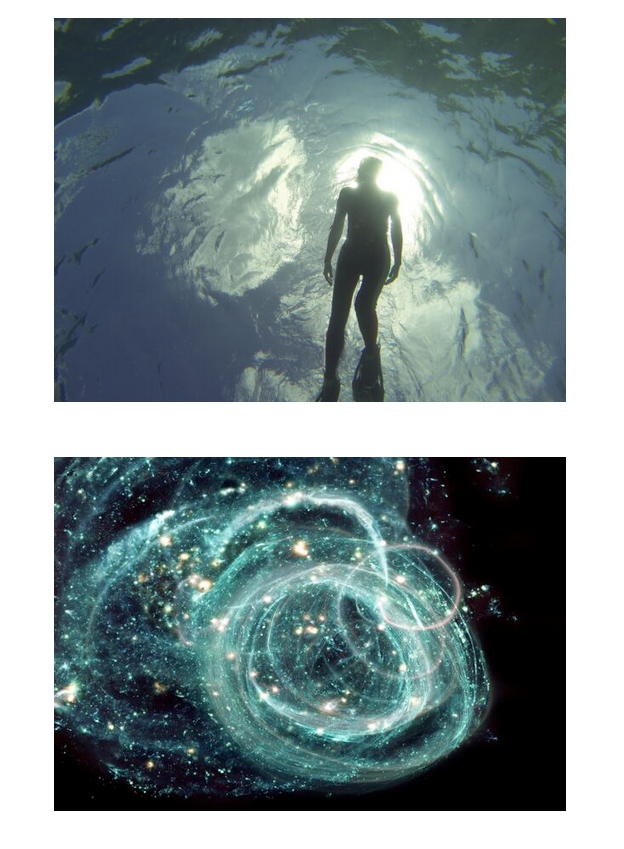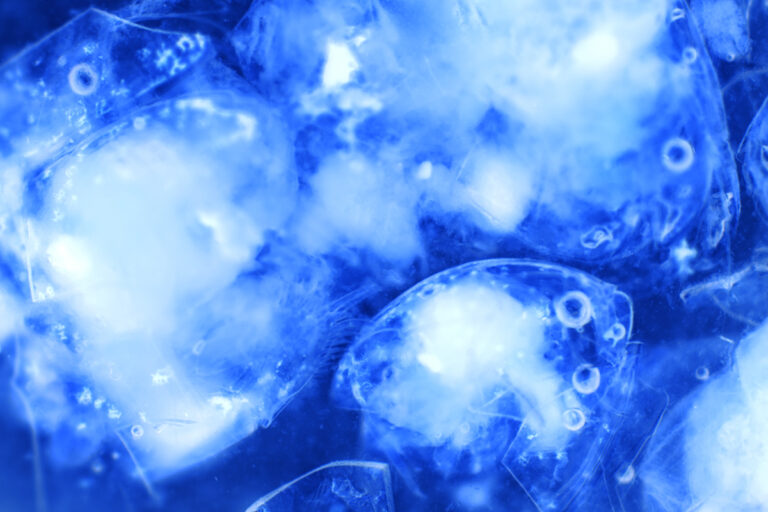
Tatter, issue 3 : Blue
A Blue of Bioluminescence
Photographic investigations of ostracods.
Words and images by Margaret LeJeune.
Under a waxing moon, my partner and I sailed our 37-foot sailboat, Bear, down the Chesapeake from Annapolis to Solomons Island. The sky was inky and the water flat calm for the last few hours. As per tradition, we set the anchor and hopped in our dinghy to go to shore for a celebratory cocktail. As we pulled away from Bear, the waters around the dinghy began to light up like fireworks reflecting in a pool. Brilliant blue light danced on the surface. This was my first experience up close and personal with bioluminescent dinoflagellates, and it spurred my cross-species creative research with this incredible light source.
That summer changed the way I thought about the ocean. It was the first season that we lived aboard our boat, traveling, working, entertaining, and recreating by the weather and tides. The rhythm of the sea became the rhythm of our lives, dictating our movements and moods. The bioluminescent sighting set off a flurry of synapses and a flood of curiosity that fueled my desire to better understand marine ecology and the interconnections of life.
The following year we added Solomons Island to our sailing itinerary again, so that I could spend more time with the sparkling seas. I returned to the same anchorage at the same time of year, excited to see the bioluminescence. I was met with disappointment. The blue was absent.

The following fall, I returned back to my academic position at Bradley University in Peoria, IL, with a need to understand why the blue light had been snuffed from the sea. I received a grant from the university to start a new research project investigating the power of bioluminescent organisms in the field of photography. I titled the project Growing Light; and I began by culturing the dinoflagellate Pyrocystis fusiformis, which are similar to the organisms I saw in the Chesapeake Bay. These single-cell marine plankton can generate a bright blue flash of light using a luciferin-luciferase chemical reaction. This biological capacity appears to be useful for startling potential predators, and it is commonly seen in the wave action at popular tourist sites, including Mosquito Bay in Vieques, Puerto Rico and Sam Mun Tsai Beach in Hong Kong.

Continue reading on Tatter HERE